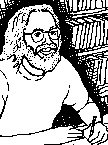

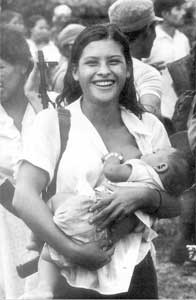 |
"Miliciana de Waswalito," Matagalpa, Nicaragua, 1984 , by Orlando Valenzuela. |
sabbatical | marc | mountains | masses | mujeres
Reflections on the topic of my sabbatical--social constructs of gender.
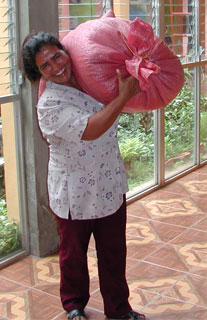 When I saw Irma hoist a quintal (100-pound bag) of coffee onto her shoulder, I knew we were meeting with a special group of women. Fundación Entre Mujeres (FEM) in Estelí, Nicaragua is a women's farmer cooperative with a particularly high level of political and social consciousness. When I returned home, I recommended that Madison's own fair-trade Just Coffee consider working them them. Later Just Cofffee visited FEM and was equally impressed with the group. The two are now working together to import fairly traded, organically grown coffee to the United States.
When I saw Irma hoist a quintal (100-pound bag) of coffee onto her shoulder, I knew we were meeting with a special group of women. Fundación Entre Mujeres (FEM) in Estelí, Nicaragua is a women's farmer cooperative with a particularly high level of political and social consciousness. When I returned home, I recommended that Madison's own fair-trade Just Coffee consider working them them. Later Just Cofffee visited FEM and was equally impressed with the group. The two are now working together to import fairly traded, organically grown coffee to the United States.
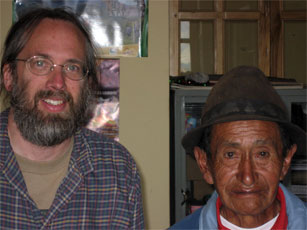 A highlight of my trip to Ecuador was meeting Luis Catucuamba, son of legendary Indigenous leader Dolores Cacuango and longtime activist and educator. Both play key roles in the story in my book manuscript Indians and Leftists in the Making of Ecuador’s Modern Indigenous Movements which I desperately want to finish this year. I work closely with various Indigenous organizations on their web pages, including one for the Escuela de Formación de Mujeres Lideres "Dolores Cacuango".
A highlight of my trip to Ecuador was meeting Luis Catucuamba, son of legendary Indigenous leader Dolores Cacuango and longtime activist and educator. Both play key roles in the story in my book manuscript Indians and Leftists in the Making of Ecuador’s Modern Indigenous Movements which I desperately want to finish this year. I work closely with various Indigenous organizations on their web pages, including one for the Escuela de Formación de Mujeres Lideres "Dolores Cacuango".
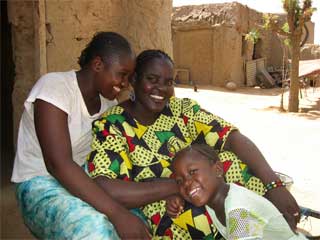 Mali was the most patriarichal and most difficult place I have ever visited. Some estimates claim that 70 percent of women in this predominately Muslim country have undergone female genital mutilation, which is a particularly horrific and misogynistic means of domination. Polygamy is widespread, which points to underlying sexual double-standards. We visited men with multiple wives (Islamic law alows four), and at first it was not always clear who was whom. In The Cruelest Journey: Six Hundred Miles to Timbuktu (Washington, DC: National Geographic Society, 2005), Kira Salak similarly describes her revulsion at these practices, but also notes how happy the women seemed to be and how well multiple wives got along with each other. To me, it seems like a contradiction but I made similar observations. I don't have a good explanation, and perhaps it only points to how much more I have to learn about the world.
Mali was the most patriarichal and most difficult place I have ever visited. Some estimates claim that 70 percent of women in this predominately Muslim country have undergone female genital mutilation, which is a particularly horrific and misogynistic means of domination. Polygamy is widespread, which points to underlying sexual double-standards. We visited men with multiple wives (Islamic law alows four), and at first it was not always clear who was whom. In The Cruelest Journey: Six Hundred Miles to Timbuktu (Washington, DC: National Geographic Society, 2005), Kira Salak similarly describes her revulsion at these practices, but also notes how happy the women seemed to be and how well multiple wives got along with each other. To me, it seems like a contradiction but I made similar observations. I don't have a good explanation, and perhaps it only points to how much more I have to learn about the world.
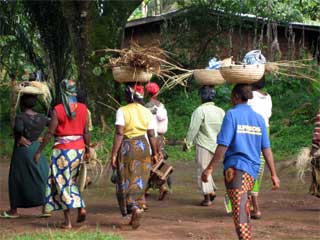 In Cameroon, we visited a Prescraft project at Bamessing outside of Bamenda in NorthWest Province. Although most of the artisans (potters, woodwork) were men, a few women brought their baskets to show to us. The men tend to work in groups in the Prescraft center, while the women work at home alone on their baskets while they engage in other domestic tasks. The women patiently waited on the porch of the center while we visited with the male workers. It was getting late and they needed to return home. Finally, we briefly met with them. They seemed very pleased with the visit. Once we finished the visits, they gathered up their baskets, placed them on their heads, and gracefully walked home.
In Cameroon, we visited a Prescraft project at Bamessing outside of Bamenda in NorthWest Province. Although most of the artisans (potters, woodwork) were men, a few women brought their baskets to show to us. The men tend to work in groups in the Prescraft center, while the women work at home alone on their baskets while they engage in other domestic tasks. The women patiently waited on the porch of the center while we visited with the male workers. It was getting late and they needed to return home. Finally, we briefly met with them. They seemed very pleased with the visit. Once we finished the visits, they gathered up their baskets, placed them on their heads, and gracefully walked home.
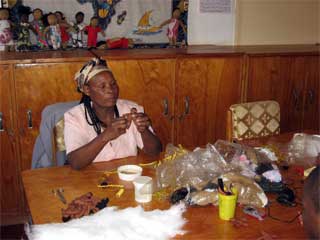 In Nairobi, we briefly visted a women's sewing cooperative called Dollicraft. They are a group of single women who have worked together for years in order to earn a living. In addition to ornaments and church vestments, they make ethnic African dolls. My sister has a doll collection, so we picked one up for her.
In Nairobi, we briefly visted a women's sewing cooperative called Dollicraft. They are a group of single women who have worked together for years in order to earn a living. In addition to ornaments and church vestments, they make ethnic African dolls. My sister has a doll collection, so we picked one up for her.
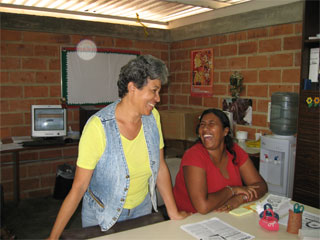 Misión Madres del Barrio is one of Venezuela's newest social missions. The Bolivarian Revolution has made it clear that women are one of their highest priorities. This mission was set up to guarantee mothers and their families access to fundamental rights of health, nutrition, housing, education, culture, and recreation.
Misión Madres del Barrio is one of Venezuela's newest social missions. The Bolivarian Revolution has made it clear that women are one of their highest priorities. This mission was set up to guarantee mothers and their families access to fundamental rights of health, nutrition, housing, education, culture, and recreation.
 The gendered nature of public spaces is always interesting. The town square of Punta Arenas, Chile features a statute of Hernando de Magallanes, the Portuguese navigator who made the first passage of the famed Magellan Straits. I remembered this as just a male representation. When I looked at my photo of the town square, however, I notice the mermaid under him holding up his shield. What is she doing there? Why are there no named women in the square?
The gendered nature of public spaces is always interesting. The town square of Punta Arenas, Chile features a statute of Hernando de Magallanes, the Portuguese navigator who made the first passage of the famed Magellan Straits. I remembered this as just a male representation. When I looked at my photo of the town square, however, I notice the mermaid under him holding up his shield. What is she doing there? Why are there no named women in the square?
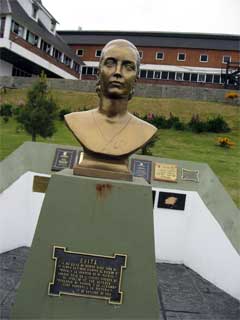 Evita tends to be a fairly universal symbol in Argentina, even in Ushuaia in Tierra del Fuego at the southern tip of the country. The quote on the plaque, however, points to how she tended to disappear into Peron's shaddow:
Evita tends to be a fairly universal symbol in Argentina, even in Ushuaia in Tierra del Fuego at the southern tip of the country. The quote on the plaque, however, points to how she tended to disappear into Peron's shaddow:
"Yo no quise ni quiero nada para mi. Mi gloria es y será siempre el escudo de Perón y la bandera de mi pueblo, y aunque deje en el camino jirones de mi vida, yo se que ustedes recogerán mi nombre y lo llevaran como bandera a la victoria"
- 17 de octubre de 1951
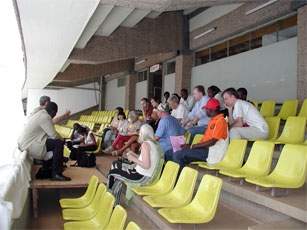 A persistent theme that has grown with the World Social Forum is that it should practice in its own spaces the type of human relations it advocates for the rest of the world. This includes attention to issues of balance and equity, including the gender of those who speak on panels. All too often, white males speak from on top of a platform down to an audience that overwhelmingly reflects the gender and racial diversity of forum participants. Last year we were determined that all of our future panels would achieve gender balance. Observing this year's panels, it is clear that we still have a long ways to go. On this panel, three men sat up front while a woman listed as a speaker sat in the audience but was not invited to contribute. A panel on scholar-activism similarly had four men and only one woman.
A persistent theme that has grown with the World Social Forum is that it should practice in its own spaces the type of human relations it advocates for the rest of the world. This includes attention to issues of balance and equity, including the gender of those who speak on panels. All too often, white males speak from on top of a platform down to an audience that overwhelmingly reflects the gender and racial diversity of forum participants. Last year we were determined that all of our future panels would achieve gender balance. Observing this year's panels, it is clear that we still have a long ways to go. On this panel, three men sat up front while a woman listed as a speaker sat in the audience but was not invited to contribute. A panel on scholar-activism similarly had four men and only one woman.
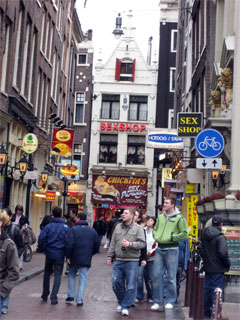 Even though I lived in The Netherlands for a year, I had only been to the red light district once. The woman in whose house I stayed in Amsterdam made me promise not to go there. When I finally went, I wondered what the big deal was. Women sitting in windows, and men running thimble scams on tables that they pick up and run when the cops turn the corner. Twenty four years later, my response is quite the same. The putas sit in windows, perhaps ironically, on a square facing the back side of the Oude Kerk (old church). I know academic studies like to pontificate on how prostitution is empowering for the women, that it's a positive economic step that is often taken consciously and rarely permanently. But, still, to see women in what looks very much like cages pretending to hump men that go by seems so degrading and dehumanizing. Yes, they can make good money (sex sells), but it does not seem to be empowering, nor does it seem to be a political act. It's part of that libertarian streak that runs through Amsterdam, I guess (just let live what does not hurt anyone). Oh, and studies show that few Dutch men visit the prostitutes. It's mostly those Brits. Go figure.
Even though I lived in The Netherlands for a year, I had only been to the red light district once. The woman in whose house I stayed in Amsterdam made me promise not to go there. When I finally went, I wondered what the big deal was. Women sitting in windows, and men running thimble scams on tables that they pick up and run when the cops turn the corner. Twenty four years later, my response is quite the same. The putas sit in windows, perhaps ironically, on a square facing the back side of the Oude Kerk (old church). I know academic studies like to pontificate on how prostitution is empowering for the women, that it's a positive economic step that is often taken consciously and rarely permanently. But, still, to see women in what looks very much like cages pretending to hump men that go by seems so degrading and dehumanizing. Yes, they can make good money (sex sells), but it does not seem to be empowering, nor does it seem to be a political act. It's part of that libertarian streak that runs through Amsterdam, I guess (just let live what does not hurt anyone). Oh, and studies show that few Dutch men visit the prostitutes. It's mostly those Brits. Go figure.
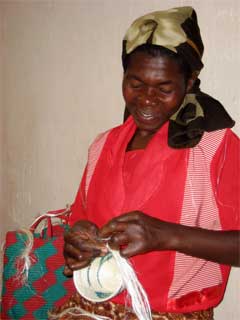 Conservative, Catholic Rwanda is a world away from liberal, secular Amsterdam. Birth control is a no-no, so kids run around everywhere and HIV/AIDS infection rates are through the roof. Yet, Africa is so much more senual and alive than uptight Europe, and I suspect that many women in Rwanda have more sex and enjoy it more than most putas in the Red Light District. Rwanda is not quite as patriarchal as Muslim Mali, but still the tight gendered expectations are more than what I would care for. What is surprising, however, is how empowered women seem to be in Rwanda, particularly given the country's history of genocide. In the rural, isolated village of Muramba we meet with basket weavers. They seem to have organized themselves, and a very animated woman leads the meeting. They have come together, and are making a better world for themselves.
Conservative, Catholic Rwanda is a world away from liberal, secular Amsterdam. Birth control is a no-no, so kids run around everywhere and HIV/AIDS infection rates are through the roof. Yet, Africa is so much more senual and alive than uptight Europe, and I suspect that many women in Rwanda have more sex and enjoy it more than most putas in the Red Light District. Rwanda is not quite as patriarchal as Muslim Mali, but still the tight gendered expectations are more than what I would care for. What is surprising, however, is how empowered women seem to be in Rwanda, particularly given the country's history of genocide. In the rural, isolated village of Muramba we meet with basket weavers. They seem to have organized themselves, and a very animated woman leads the meeting. They have come together, and are making a better world for themselves.
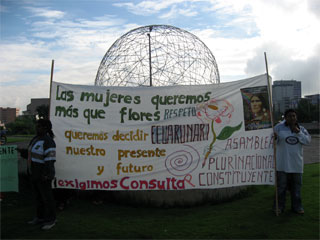 On the morning of March 8, International Women's Day, our Caravan for Peace departs from the Parque El Arbolito, the traditional gathering point for protest marches in Quito. We are supposed to leave at 7 am, but time drags on as organizers pull last minute details together. Meanwhile, Indigenous women who have been meeting at CONAIE all week begin to show up for their planned 9 am march. The first ones to arrive are from Ecuarunari and they have a banner featuring Dolores Cacuango that reads "We women demand more than flowers; we want to decide our present and future." They call for a Plurinationnal Constityente Assembly. We leave before the march begins, but Paulina later tells me that thousands of women showed up and the meeting and march was very much a success.
On the morning of March 8, International Women's Day, our Caravan for Peace departs from the Parque El Arbolito, the traditional gathering point for protest marches in Quito. We are supposed to leave at 7 am, but time drags on as organizers pull last minute details together. Meanwhile, Indigenous women who have been meeting at CONAIE all week begin to show up for their planned 9 am march. The first ones to arrive are from Ecuarunari and they have a banner featuring Dolores Cacuango that reads "We women demand more than flowers; we want to decide our present and future." They call for a Plurinationnal Constityente Assembly. We leave before the march begins, but Paulina later tells me that thousands of women showed up and the meeting and march was very much a success.
Beatriz is an artist who paints community scenes to describe their history and struggles. Community members are determined to stay and defend their land. Not only would it be hard to adapt to a new country with a different culture, Beatriz notes that they have an Indigenous heritage and want to remain where their roots are. They refuse to retreat, and are determined to continue to defend their land and rights. Beatriz related that people in the community have always said that San Jose will die standing rather than living on its knees.
 Blanca Chancoso has been called a later day Dolores Cacuango. She holds up the legacy well, providing a strong voice and leadership for Indigenous and popular movements, not only in Ecuador but throughout the Americas. She played a leading role in drafting the Declaration of Iximché, and gave a rousing speech at the Indigenous summit's closing rally. With her guidance, the Indigenous movement marches forward. (Unfortunately, the Indigenous summit remained dominated by men. Usually men outnumbered women by 3 to 1 on panels, and by 10 to 1 when people queued up for discussions. If machismo and gender domination are European imports, they seem to have made serious inroads into the international Indigenous movement.)
Blanca Chancoso has been called a later day Dolores Cacuango. She holds up the legacy well, providing a strong voice and leadership for Indigenous and popular movements, not only in Ecuador but throughout the Americas. She played a leading role in drafting the Declaration of Iximché, and gave a rousing speech at the Indigenous summit's closing rally. With her guidance, the Indigenous movement marches forward. (Unfortunately, the Indigenous summit remained dominated by men. Usually men outnumbered women by 3 to 1 on panels, and by 10 to 1 when people queued up for discussions. If machismo and gender domination are European imports, they seem to have made serious inroads into the international Indigenous movement.)
 In our panel on The Future of the Forum, Marina Karides noted that the National Planning Council (NPC) for the USSF was comprised mostly of young women of color. The entire forum was organized from this inclusionary, participatory vision. Returning home, participants continue to comment on how open and welcoming the forum's spaces were for queer, transgender, and gender non-conformists. Of the six plenary sessions, the most successful was Saturday night's panel on Liberating Gender and Sexuality. It played to a packed auditorium, and speakers were greeted with wild cheers. The buzz from the plenary continues after the forum, with people asking around for audio and video from the event in order to review the presentations and discussions. In past forums, including the World Social Forum in Nairobi six months earlier, it has been a struggle not to have older, educated, white males dominate the conversations. The USSF set a new standard for engaging these issues that will present a challenge to other forums to meet.
In our panel on The Future of the Forum, Marina Karides noted that the National Planning Council (NPC) for the USSF was comprised mostly of young women of color. The entire forum was organized from this inclusionary, participatory vision. Returning home, participants continue to comment on how open and welcoming the forum's spaces were for queer, transgender, and gender non-conformists. Of the six plenary sessions, the most successful was Saturday night's panel on Liberating Gender and Sexuality. It played to a packed auditorium, and speakers were greeted with wild cheers. The buzz from the plenary continues after the forum, with people asking around for audio and video from the event in order to review the presentations and discussions. In past forums, including the World Social Forum in Nairobi six months earlier, it has been a struggle not to have older, educated, white males dominate the conversations. The USSF set a new standard for engaging these issues that will present a challenge to other forums to meet.
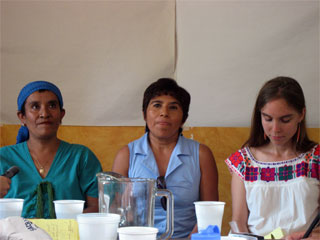 The gendered aspects of our Mexico trip threw me for a bit of a loop. I was looking forward to visiting Juchitán which has a reputation as being a strong matriarchical society, but yet only men spoke to us at the groups we visited. When the Zapatistas sprung up in Chiapas in 1994, with things like the Revolutionary Women's Laws and the leadership of Comandanta Ramona we had the image that they had broken from the confines of machista society. Yet, upon our return, we find that the society is still very male dominated. I attend a plenary on women at the Zapatista encounter, but the discussion is rather superficial and trite. I am disappointed. One of the most lively and impressive people we met, however, was Estela Río González from the Coordinadora de Mujeres Primero de Agosto in Oaxaca. She told us of her leadership in taking over the state TV and radio stations last August in support of APPO and the striking teachers. Estela has cancer, but is an incredible example of the human will to struggle on in the face of overwhelming odds.
The gendered aspects of our Mexico trip threw me for a bit of a loop. I was looking forward to visiting Juchitán which has a reputation as being a strong matriarchical society, but yet only men spoke to us at the groups we visited. When the Zapatistas sprung up in Chiapas in 1994, with things like the Revolutionary Women's Laws and the leadership of Comandanta Ramona we had the image that they had broken from the confines of machista society. Yet, upon our return, we find that the society is still very male dominated. I attend a plenary on women at the Zapatista encounter, but the discussion is rather superficial and trite. I am disappointed. One of the most lively and impressive people we met, however, was Estela Río González from the Coordinadora de Mujeres Primero de Agosto in Oaxaca. She told us of her leadership in taking over the state TV and radio stations last August in support of APPO and the striking teachers. Estela has cancer, but is an incredible example of the human will to struggle on in the face of overwhelming odds.